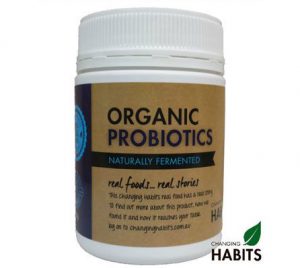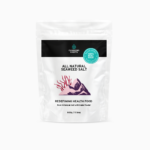Eating a whole food diet which includes a variety of organic seasonal vegetables, probiotics from fermented foods and avoiding inflammation causing foods is critical to your optimal health.
Cultures all over the world eat a variety of fermented foods depending on what is available to them; they are often consumed with every meal. However, no matter how beneficial these fermented foods and probiotics are by themselves – they turn into something a lot more powerful when you combine them with prebiotic foods.
So what are prebiotics?
You’re probably already familiar with probiotics, which are types of good bacteria similar to what is found in the digestive tract. Consuming fermented foods and probiotic supplements help introduce good bacteria to the gut, while prebiotics essentially ‘fertilize’ or feed this bacteria. Basically, prebiotics are special types of plant fibre that nourish the good bugs!
There are three different categories of prebiotics. Each of these categories contain sub categories, which all feed different types of gut microorganisms:
- Non-starch polysaccharides (eg inulin and fructooligosaccaride)
- Soluble fibre (eg psyllium husks)
- Resistant starch (eg cooked and cooled rice, cooked and cooled potatoes, green bananas/green banana flour)
The following criterion needs to be met in order to be classified as a prebiotic food by this review:
- ‘Resists gastric acidity, hydrolysis by mammalian enzymes, and absorption in the upper gastrointestinal tract;
- Is fermented by the intestinal microflora;
- Selectively stimulates the growth and/or activity of intestinal bacteria potentially associated with health and well-being.’
Basically, all prebiotics are a form of fibre which enters the digestive tract, passes through the small intestine and stimulates the growth of microbes.
Examples of prebiotics:
- Cooked then cooled rice
- Potato cooked and cooled
- Green banana
- Garlic
- Onion
- Leeks
- Acacia gum
- Chicory root
- Asparagus

Examples of probiotics:
- Yoghurt
- Kefir
- Sour Cream
- Cultured Vegetables
- Changing Habits Probiotics *specifically made to contain both probiotics AND prebiotics, it’s a real food supplement that can colonize well in the digestive tract.
The preparation and/or state of a food determine the level of prebiotics that are within the food. For example, rice that has been cooked and cooled for 24 hours contains a powerful amount of resistant starch compared to rice that has just been cooked. It is best not to ‘supplement’ with these foods every day. Instead it is better to rotate them in your diet, to ensure you feed all different types of bacteria in your gut.
For even more health benefits, you can combine these prebiotic foods with probiotics from fermented foods. Prebiotics will allow the probiotics you consume to colonize your gut, making the fermented foods more effective. This is why the Changing Habits Probiotics contain both pre AND probiotics. Top benefits of consuming prebiotics:
Top benefits of consuming prebiotics:
- When bacteria digest resistant starches, they produce short-chain fatty acids, such as butyrate. Butyrate is the preferred food for the cells in the colon and therefore can begin the healing process of the gut lining.
- Lowers the risk of cardiovascular disease.
- Resistant starch may not effect blood sugar levels and increases insulin sensitivity, so can even be beneficial for diabetics.
- Resistant starch reduces the pH (increases acidity) which is essential to digest your food and ward away pathogens. High pH levels are linked with several illnesses such as Crohn’s and ulcerative colitis.
- Stimulates the growth of Bifidobacterium which is an extremely beneficial bacteria.
- Boosts stool frequency and consistency.
- Boosts your immune system, as 80% of your immune system lies in your digestive tract.
- Increases the absorption of nutrients.
Are you feeding your gut with the right prebiotic?
Although we know that all prebiotics have the potential to be highly beneficial, resistant starch (a form of prebiotic) is becoming more favourable for feeding beneficial bacteria. This form of prebiotic can be safe for most people, although this still depends on the microbial balance in the gut. If you have an overgrowth of pathogenic microorganisms living in your gut, such as a parasite, bacteria or yeast, you will have to be extra diligent with the type of foods you are consuming. In this case we recommend you consider a comprehensive stool test through your preferred practitioner first, to discover what is living in your gut.
Stool testing can be beneficial to ensure you are feeding the right gut bugs with the right prebiotics. Alternatively, you can slowly introduce foods—such as half a cup of cooked then cooled rice or a tablespoon of green banana flour—and monitor how you feel. If you develop a bloated stomach, constipation or diarrhoea, then your gut may need some extra attention OR you need to reduce the amount you are having and slowly, slowly increase the amount.
By including prebiotics in your diet, you can gradually rebuild your gut flora. So, along with fermented foods, I encourage you to also consume more prebiotic foods.
Happy changing habits.
Sheridan Williamson
Changing Habits Nutritionist








Is sweet potato as beneficial as white potatoes?
Hi Annie,
Here is a great infographic you can look at comparing the two; https://www.precisionnutrition.com/sweet-potatoes-vs-potatoes-infographic